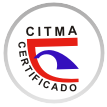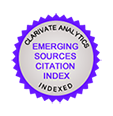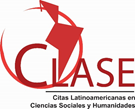Digital Education and Income Inequality: A Comparative Analysis for the Ecuadorian Case
Keywords:
Digital education, Income inequality, Digital divide, Labor market.Abstract
This study analyzes the relationship between digital literacy and income inequality in Ecuador, with an emphasis on differences by gender and geographic area. It is based on the human capital approach and the digital divide theory, recognizing the growing importance of digital skills in access to employment and economic well-being. The main objective is to evaluate the extent to which digital literacy influences per capita income, also considering possible interactions with gender and territorial location. The research adopts quantitative, comparative, and non-experimental design, using data from the National Survey of Employment, Unemployment, and Underemployment (ENEMDU). The sample includes 1,223 individuals who accessed digital educational services. One-way and two-way analysis of variance (ANOVA) are applied, as well as comparisons of means. The results show that the level of digital literacy has a significant effect on per capita income (F = 30.49; p < 0.001). Independent effects of gender and geographic area were also identified, although their interactions with educational level were not significant. However, the visual patterns reveal cumulative inequalities, especially among rural women with low educational levels. The findings provide empirical evidence on the role of digital education as a relevant factor in income distribution. It is concluded that public policies aimed at strengthening digital inclusion in vulnerable contexts can contribute to reducing structural inequalities.
Downloads
Published
How to Cite
Issue
Section
License
Copyright (c) 2025 Editorial "Universo Sur"

This work is licensed under a Creative Commons Attribution-NonCommercial-NoDerivatives 4.0 International License.
La editorial "Universo Sur", de la Universidad de Cienfuegos, publica el contenido de la Revista "Universidad y Sociedad" bajo una Licencia Creative Commons Atribución-NoComercial-SinDerivar 4.0 Internacional.
© Podrá reproducirse, de forma parcial o total, el contenido de esta publicación, siempre que se haga de forma literal y se mencione la fuente.










